Yeah, see a theme going here? Hey, i’m on a kick and i genuinely love exploring literary and creative mythos.

Before we get started i just want to quickly state that the demo for the 1st Act of the Dieselpunk Opera is basically done. I can’t work on it anymore. It would be best if i put it down for awhile and moved on. I’m just awaiting some basic tracks i asked a guitarist friend of mine to lay down for it and then i’ll post it here for a limited time. 3-5 days. You will be able to listen to the 1st Act demo for 3-5 days then i will remove it. The same will probably the happen for the 2nd Act. They’re demo versions and they’re not actually ready to be truly out there.
Now, on to business. The idea of the modern fantastical Lost World is more or less traced to 1888’s King Solomon’s Mines. While lost cities and civilizations had certainly existed before this, from Swift’s Lilliputians in Gulliver’s Travels to Plato’s invention of Atlantis, these were used very specifically as satire and metaphoric demonstration. King’s Solomon’s Mines gave birth to a meme that would blossom and peak in the pulp fiction period.
After the 50s science fiction transformed the Lost World into science fiction epicness and i believed the meme evolved into something similar but more expansive. Let’s look back on some of the greatest pre WW2 Lost Worlds.
7. Kukuanaland from King Solomon’s MInes.


This list is in chronological order so let’s start with the work that invented the Lost World meme. Allan Quartermain is the victorian precursor to Indiana Jones. Truly and seriously, you can draw a direct line. In the mid 1880s lost civilizations were in fact being discovered.
Sir H. Rider Haggard’s brother told him there was no way he could write a novel as good as Treasure Island, so Haggard bet his brother 5 shillings he could. The result was a book published in 1885 that was a blockbuster, created a new genre of fantastic fiction, the Lost World story, introduced a character that was as well known for decades afterwards as Indiana Jones is now and has been adapted into at least 6 movies.
Kukuanaland is somewhere in the south east Congo region. The inhabitants have a well-organised army and society and speak an ancient dialect of IsiZulu. Kukuanaland’s capital is Loo, the destination of a magnificent road from ancient times. The city is dominated by a central royal kraal.
Quartermain, an adventurer based in Africa, is hired to find an aristocrat’s brother who has disappeared while trying to find the fabled mines of King Solomon. They find an uncharted land on the other side of a mountain range called Suliman Berg, using a map drawn in blood by a dead 16th century Portegeuse explorer.
6. Kafiristan from The Man Who Would Be King by Rudyard Kipling

First of all, go right now and watch the 1975 film starring Sean Connery and Michael Caine. The Man Who Would Be King. It’s awesome.
Two British adventurers in India travel to some remote part of Afghanistan and try to become kings of a region there. I’d tell you more but really, go watch the movie or read the book. I never read the book, honestly, so.. you know i can only recommend the movie.
The really crazy thing about the tale is that it’s inspired by true stories, the exploits of James Brooke, an Englishman who became the first White Rajah of Sarawak in Borneo; and by the travels of American adventurer Josiah Harlan, who was granted the title Prince of Ghor in perpetuity for himself and his descendants.
5. Maple White Land from The Lost World by Sir Arthur Conan Doyle.


Yes, Sherlock Holmes’ creator and author actually wrote other books. The Lost World was a major success when it came out in 1912 and nailed the meme down bit more.
A professor claims to have discovered dinosaurs in South America which no one believes. After years of ridicule a team joins him to prove the claim true or false. They go deep into the Amazon and find a plateau (where naturally the natives will not go). THEY go, because, well, it’s a crappy story if they don’t, and low and behold: dinosuars! Blue clay! Race of Ape Men! Humans living on the other side of the plateau with whom the ape men are at war! Capture! Rescue! Adventure!
4. Almost Everything Ever Written by Edgar Rice Burroughs But For Brevitiy’s Sake We’ll Say The Land That Time Forgot.

The Land That Time Forgot is the most cemented and stereotypical story Burroughs wrote in the Lost World genre, with dinosaurs and all (Lost Worlds often have Dinosaurs) but the Tarzan and John Carter of Mars novels are endless tales of lost worlds, cities and civilizations. It’s kind of Burroughs’ hallmark.
This one has an island in the South Atlantic, dinosaurs of course, various races of near human primitives, captures, escapes, etc.
3. The Savage Land from Ka-Zar by Manvis Publishing, Timely Comics and Marvel Comics


I know who Ka-Zar is, but that’s because i used to be a comics nerd. Ka-Zar was a Tarzan rip off who started in the pulps in the 1930s. It ran for 2 years, from 1936 to 37. In 1939 the tales were put into comic form by Timely Comics, who eventually became Marvel Comics. The comic series Ka-Zar was featured in was Marvel Comics and Marvel Mystery Comics, although Timely was not yet Marvel. Got it?
Thus Ka-Zar and his lost world, the Savage Land, populated by dinosaurs and strange ruins and other Tarzan-esque tropes lived on into the 40s where he then faded into obscurity.
In 1965 Timely was now Marvel and Stan Lee and Jack Kirby pulled Ka-Zar and his Savage Land out of the dustbin and revamped him. They put the Savage Land in Antartica, hidden underneath by extra terrestrials. Ka-Zar has had his own comic series a number of times, in the 70s, 80s and 90s.
2. Aquilonia or The Hyborian Age from Robert E. Howard’s Conan the Barbarian

Robert E. Howard wins the creativity award for his Lost World. He made his lost world a lost age of the earth, and invented an entire world history, map, races, geography…. he built an entire world. Nowadays we live in a post Tolkien literary world where we expect this. Fantasy books are expected to do this and even beyond books they build detailed worlds. Video games invest huge amounts of creativity into world building on a level that encapsulates visual details undreamed of. But Howard my friends, was the first. The first to really commit to building an entire world in which his stories would operate.
Robert E. Howard built the first fully realized and thought out fantasy world. His Conan character ran about it (as did a few others like Kull). He wrote out an entire history and essay so that the world would be consistent throughout the stories. His main sources of inspiration were Bullfinch’s The Outline of Mythology and Clark Aston Smith’s Hyperborea cycle. Howard and Smith and even H.P.Lovercraft were all friends and all them were hugely in favor of borrowing from each other’s works in any degree. Howard borrowed Lovecraftian monsters as well, although adapted them more for a Conan yarn.
Here’s an overview of Howard’s essay outlining Hyboria which was published until well after his death. It may seem strange me putting on so much of this, but as someone who loves to write back story himself, usually just for fun knowing it will never get used, i just LOVE this stuff, enjoy reading this and this is the guy who put fantasy back story on the map, so respect should be paid.
HYBORIA:
According to the essay, at the time of this cataclysm a group of primitive humans were at a technological level hardly above the Neanderthal. They fled to the Northern areas of what was left of the Thurian continent to escape the destruction. They discovered the areas to be safe but covered with snow and already inhabited by a race of carnivorous apes. The apes were large with white fur and apparently native to their land. The stone age invaders engaged in a territorial war with them and eventually managed to drive them off, past the Artic Circle. Believing their enemies fated to perish and no longer interested in them, the recently arrived group adapted to their new, harsh environment and its population started to increase.
Hyborian ancestors
One thousand five hundred years later, the descendants of this initial group were called “Hyborians”. They were named after their highest ranking god deity, Bori. The essay mentions that Bori had actually been a great tribal chief of their past who had undergone deification. Their oral tradition remembered him as their leader during their initial migration to the north though the antiquity of this man had been exaggerated.
By this point the various related but independent Hyborian tribes had spread throughout the northern regions of their area of the world. Some of them were already migrating south at a “leisurely” pace in search of new areas in which to settle. The Hyborians had yet to encounter other cultural groups but engaged in wars against each other. Howard describes them as a powerful and warlike race with the average individual being tall, tawny-haired, and grey eyed. Culturally they were already accomplished artists and poets. Most of the tribes still relied on hunting for their nourishment. Their southern offshoots however had been practicing animal husbandry on cattle for a number of centuries.
The only exception to their long isolation from other cultural groups came due to the actions of a lone adventurer, unnamed in the essay. He had traveled past the Arctic Circle and returned with news that their old adversaries, the apes, were not in fact annihilated. They had instead evolved into apemen and according to his description were by then numerous. He believed they were quickly evolving to human status and would pose a threat to the Hyborians in the future. He attempted to recruit a significant military force to campaign against them. But most Hyborians were not convinced by his tales and at last only a small group of foolhardy youths followed his campaign. None of them returned.
Beginnings of the Hyborian Age
With the population of the Hyborian tribes continuing to increase, the need for new lands also increased. The Hyborians started expanding outside their familiar territories, beginning a new age of wanderings and conquests. For five hundred years the Hyborians spread towards the South and the West of their nameless continent.
They encountered other tribal groups for the first time in millennia. They conquered many smaller clans of various origins. The survivors of the defeated clans merged with their conquerors, passing on their racial traits to new generations of Hyborians. The mixed-blooded Hyborian tribes were in turn forced to defend their new territories from pure blooded Hyborian tribes which followed the same paths of migration. Often the new invaders would wipe away the defenders before absorbing them, resulting in a tangled web of Hyborian tribes and nations with varying ancestral elements within their bloodlines.
The first organized Hyborian kingdom to emerge was Hyperborea. The tribe that established it entered their Neolithic age by learning to erect buildings in stone, largely for fortification. These nomads lived in tents made out of the hides of horses, but soon abandoned them in favor of their first crude but durable stone houses. They permanently settled in fortified settlements and developed cyclopean masonry to further fortify their defensive walls.
The Hyperboreans were by then the most advanced of the Hyborian tribes and set out to expand their kingdom by attacking their backwards neighbors. Tribes who defended their territories lost them and were forced to migrate elsewhere. Others fled the path of Hyperborean expansion before ever engaging them in war. Meanwhile the “apemen” of the Arctic Circle emerged as a new race of light-haired and tall humans. They started their own migration to the south, displacing the northernmost of the Hyborian tribes.
Rulers of the West
For the next thousand years the warlike Hyborian nations advanced to become the rulers of the Western areas of the nameless continent. They encountered the Picts and forced them to limit themselves to the western wastelands which would come to be known as the “Pictish Wilderness”. Following the example of their Hyperborean cousins, other Hyborians started to settle down and create their own kingdoms.
The southernmost of the early ones was Koth which was established north of the lands of Shem and soon started extending its cultural influence over the southern shepherds. Just south of the Pictish Wilderness was the fertile valley known as “Zing”. The wandering Hyborian tribe which conquered them found other people already settled there. They included a nameless farming nation related to the people of the Shem and a warlike Pictish tribe who had previously conquered them. They established the kingdom of Zingara and absorbed the defeated elements into their tribe. Hyborians, Picts, and the unnamed kin of the Shemites would merge into a nation calling themselves Zingarans.
On the other hand at the north of the continent, the fair haired invaders from the Arctic Circle had grown in numbers and power. They continued their expansion south while in turn displacing defeated Hyborians to the south. Even Hyperborea was conquered by one of these barbarian tribes. But the conquerors here decided to maintain the kingdom with its old name, merged with the defeated Hyperboreans and adopted elements of Hyborian culture. The continuing wars and migrations would keep the state of the other areas of the continent for another five hundred years.
1. No Human Actually Knows The City’s Name And Would Probably Go Stark Raving Mad If They Did, But The Area Is Generally Known As The Mountains Of Madness from H.P. Lovecraft.

Although written in 1931 this signature Lovecraft story wasn’t published until 1936. It is the ultimate Lost World.
By the time you’re done with Lovecraft the idea of berserk man eating dinosaurs tearing towards you with teeth gnashing will seem quaint and relaxing.
What do you want me to say? It’s Lovecraft. It’s a seminal piece of his Cthulhu Mythos and one of the his most reknowned and recognized works. The Lost World he makes up is… well it’s not like you can describe the damn thing. That’s kind of the point. The geometry is… impossible. There’s an entire history and it’s a cosmological terror rooted in doomed existentialism. If you haven’t read it… i mean, come on. It’s a gospel of geek canon.
It was also down in musical form by the Tiger Lillies, who as we’ve stated in the past we are quite endeared with here at The Steampunk Opera.
That’s it, campers! Our day’s quota of fantastical candy munchies in the form of Lost Worlds.
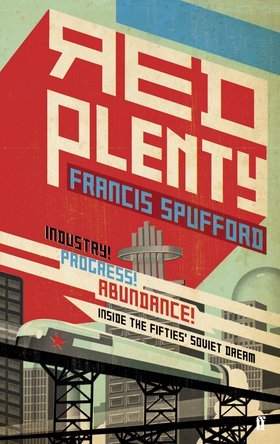








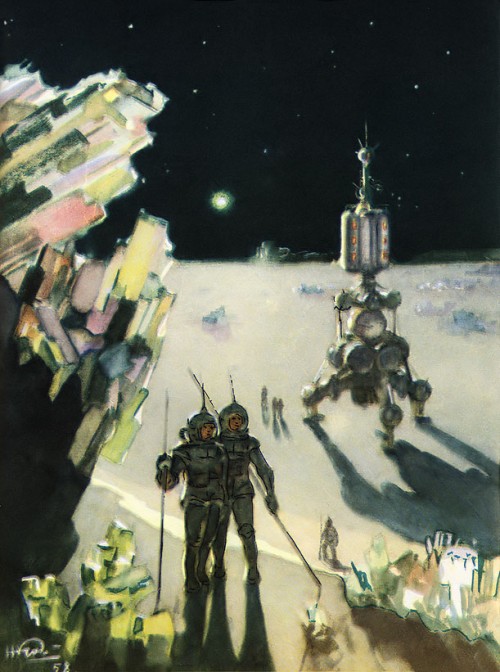
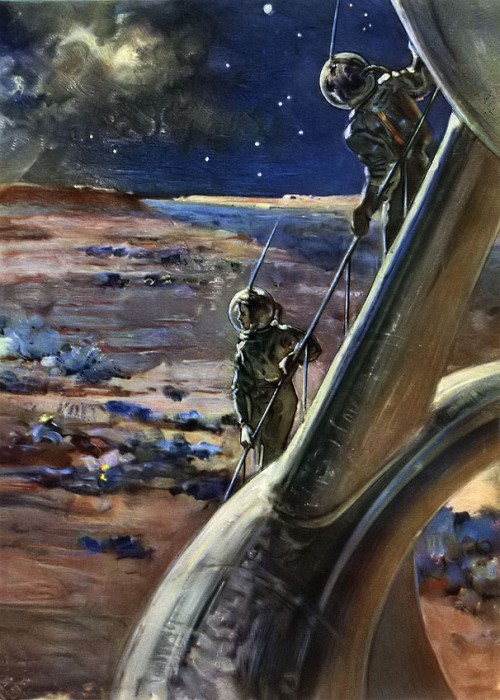












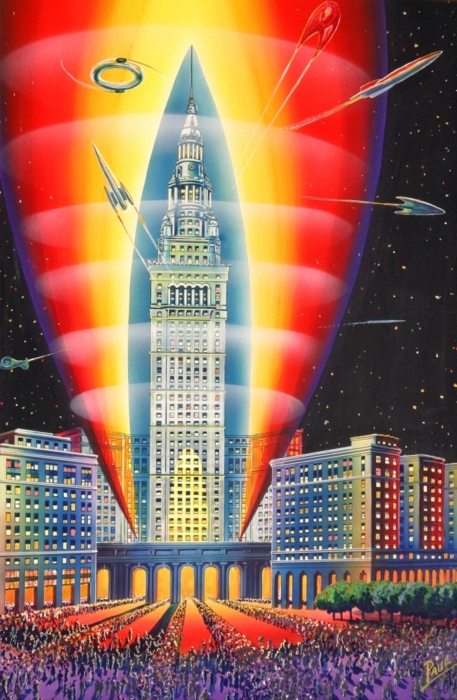
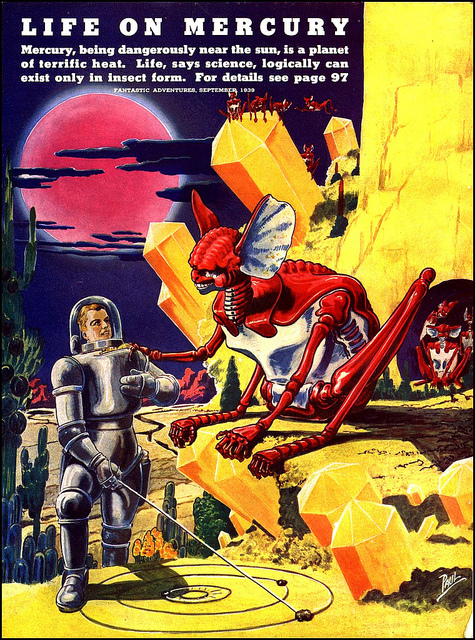
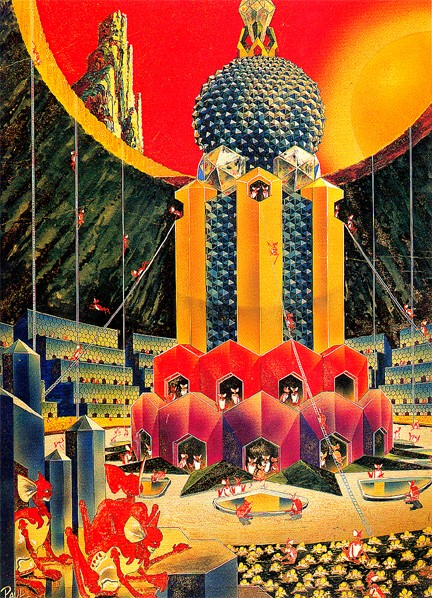


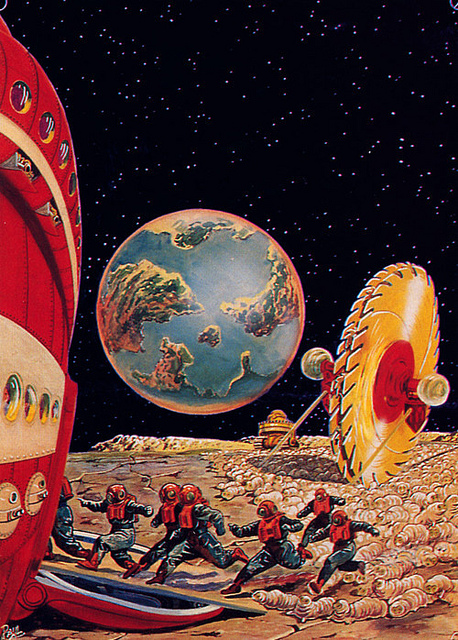



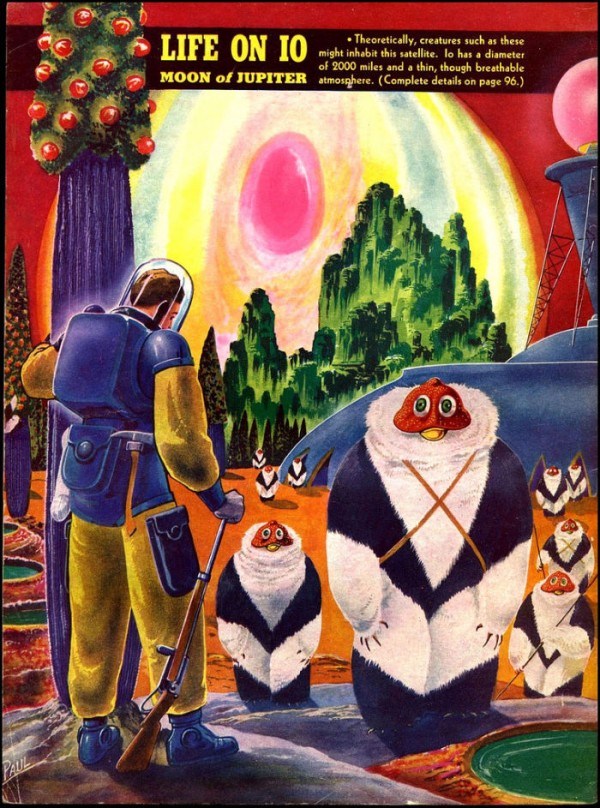
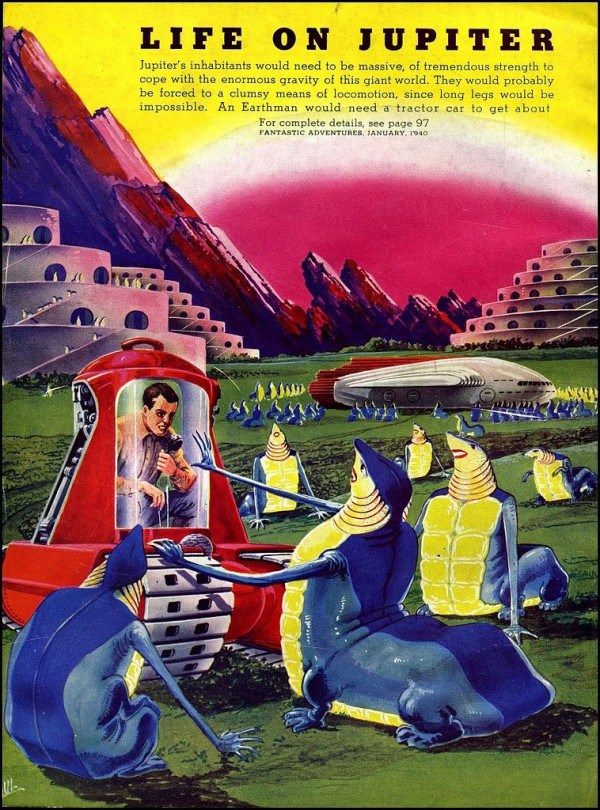






























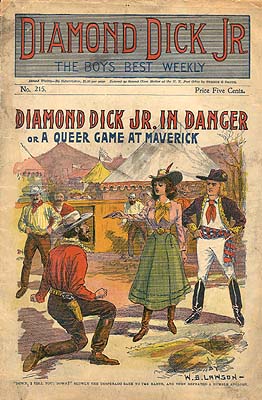






 He was created by writer Earl Derr Biggers as an Asian detective based in Honolulu in an attempt to throw a more positive Asian antithesis to the Fu Manchu stereotype and Yellow Peril hysteria that was plaguing the US in the early 20th century.
He was created by writer Earl Derr Biggers as an Asian detective based in Honolulu in an attempt to throw a more positive Asian antithesis to the Fu Manchu stereotype and Yellow Peril hysteria that was plaguing the US in the early 20th century.
 This post was originally going to be about Charlie Chan, but before we get to that famous character of Dieselpunk era serials, i figured it might be interesting if we start with the even more famous Fu Manchu, for whom Charlie Chan was created to be an antithesis.
This post was originally going to be about Charlie Chan, but before we get to that famous character of Dieselpunk era serials, i figured it might be interesting if we start with the even more famous Fu Manchu, for whom Charlie Chan was created to be an antithesis.






